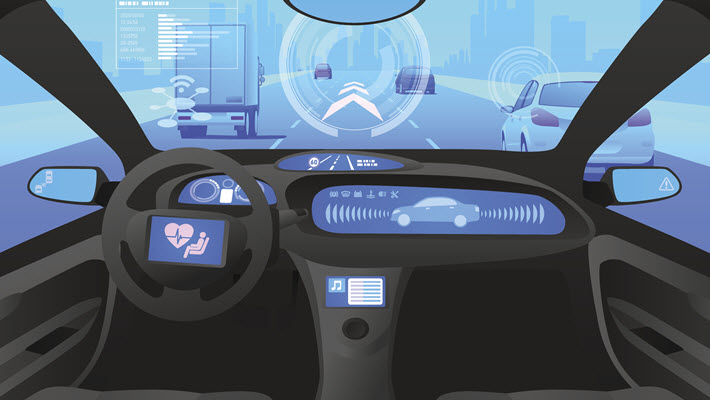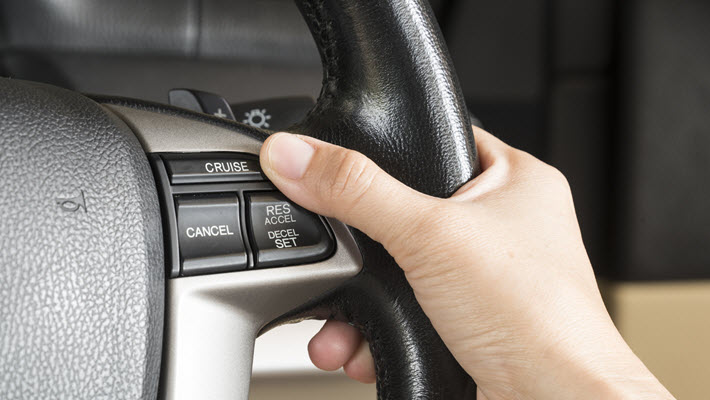With a rise in autonomous and self-driving technology appearing in more and more vehicles, having the latest technology available is something for drivers to consider. While going fully autonomous is not an available option for every make and model out on the roads today, there is technology available to help reduce the stress of driving while also improving your safety. In particular, Adaptive Cruise Control (ACC) is one of the most common add-ons you’ll find available for your vehicle.
Adaptive Cruise Control
Adaptive Cruise Control is a form of smarter cruise control that will automatically speed up or slow down to keep up pace with the car that is in front of you. You, the driver, set the maximum speed like you would when using cruise control and then a radar sensor watches for the traffic ahead. It will then lock onto the car in a lane and will then instruct your vehicle to stay anywhere from 2 to 4 seconds behind the car that is ahead of you. Adaptive Cruise Control is now almost always paired with a pre-crash braking system that will alert you and will begin braking for you to reduce the risk of an accident and to help keep you safer.
The ideal use for Adaptive Cruise Control seems to be for stop-and-go traffic and rush hour commutes where the speed can drastically change from 60mph one minute to a complete standstill the next.
Things to consider before going for ACC
Before you go running to your trusted auto mechanic to have an Adaptive Cruise Control system installed in your vehicle however, it’s important to know more about the system to determine if it is a good fit for you and your car. Here are just some of the most important things to consider when looking into ACC systems.
- They’re Still Pretty Expensive– While the price has dropped from about $2,800 five years ago, a full-range adaptive cruise control system will still likely run you anywhere from $2,000-$2,500. As the technology becomes more common and autonomous cars become more common on the road as well you can likely expect the price to decrease but for now it will still cost at least $2,000.
- There Are Different Types to Consider– It’s important to know what the capabilities of your ACC system are specifically in relations to the braking capabilities. Some systems can brake your vehicle to a complete stop while most available will only brake to a certain point and then require you brake to a complete stop. While all of them will set safer following distances and regulate your speed, knowing the limits before installing your ACC system will help cut down the risk of accidents even more.
- It’s Not Meant to Just Make Your Drive More Fun– ACC systems are designed to help you spend less energy focused on maintaining speed and distance when driving but that’s not so you can text or take care of other distractions. The idea behind an ACC is to give you more time and attention to spend looking at traffic ahead and determining the safest routes and situations.
- It Will Only Get Better– As autonomous cars become more common and popular among drivers, Adaptive Cruise Control technology will only improve. A large component of these self-driving cars is the Adaptive Cruise Control and the ability for your vehicle to regulate its own speed while also knowing when to safely stop to minimize the risk of an accident. While currently there are only one or two models with complete self-driving capabilities, the ACC options are available in brands like BMW, Volvo and Audi so as the top of the line car manufacturers perfect it, more commercial cars will begin to implement the technology and likely at a more affordable price.

Final thought
With technology going towards completely autonomous vehicles, if you’re interested in reducing the chances of an accident while out on your daily commute, a vehicle armed with adaptive cruise control is a great way to free yourself to pay more attention to the roads and potential hazards and although it’s still a costly technology, it is becoming more and more commonplace in car manufacturers, meaning sooner or later it may become standard in most models of car, further pushing the possibilities of automobiles while improving driver safety.

